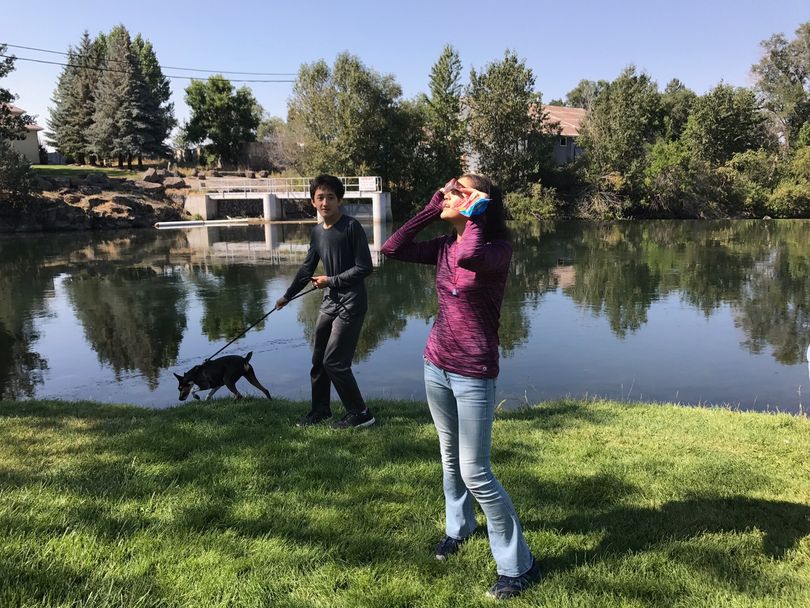Everyone cheered as day turned to night and then back again…

When the last bright bit of light disappeared through the dark eclipse glasses and the sun winked out – turning the day dark – everybody in the park cheered. What had been baking-hot sun had gradually gotten cooler and cooler, and now, all of the sudden, it was dark – and cold. No one was left in the water, where earlier happy kids and parents had been splashing and frolicking.
And the shrinking sliver we’d all been watching through our eclipse glasses had completely disappeared – there was just darkness there. Instead, as we all took off our glasses, we saw a black disk in place of the sun, surrounded by a bright, clear-white corona; points shot off it at the upper right and lower left.
And two minutes and three seconds later, when the first tiny bit of the sun’s sliver suddenly appeared and we blinked from night to day, everyone cheered again.
At the St. Anthony Sandbar, a 60-year-old small park and fishing hole along the Henry’s Fork River in St. Anthony, Idaho, there were probably 50 people at the height of the morning’s heat, before the eclipse started. Kids played in the sand, and people jumped off a diving board into the river and swam with the current the short distance back down to the swimming area. It was getting hooter and hotter, but then it started cooling. Families gathered with picnic blankets and lawn chairs; two young boys had tin-foil hats that had been handed out at a nearby Maverick store.
Sabrina Mueller, and her brother, Sebastian, were walking their dog Toby around the lawn at the park, and stopped to share a pair of our eclipse glasses. Their dad, Joachim, had fashioned a viewer of his own out of a water-filled glass bottle darkened on the outside with soot from a candle. Though that initially sounded iffy to us, it turns out that Joachim is a physicist from Minneapolis, and he made a similar viewer when he witnessed a total solar eclipse as a teenager growing up in Germany. “The whole school was closed – we were out in the yard,” he remembered. He explained that the soot filtered visible radiation; the water filtered infrared radiation; and the glass filtered UV radiation. As a teen, he hadn’t used the water; luckily, they’d only looked at the sun for short periods then.
But he said he’d forgotten that the cylindrical bottle would act like a lens, so there was a bit of distortion. The whole family had a great time comparing the view through the viewer to the view through the glasses, and eventually Sabrina spotted one of the day’s coolest sights – a crescent-shaped shadow on Toby’s black-fur side.
The family, including mom Yan Chen, a biophysics researcher, had been on a trip to Banff National Park in Canada, and decided to make a detour down into the path of totality to view the eclipse. “It was worth it,” Joachim said, quickly echoed by Sebastian, who declared, “It was totally worth it!”
Within 15 minutes after the start of totality, the park started clearing out. Two shivering brothers in wet swim trunks, walking back to their picnic table from the bathroom, paused mid-lawn, and the older brother, who had a towel, wrapped it around both his younger brother and himself before they continued on across the lawn.
The heat still doesn’t seem to have recovered, and it may be a while before I’m warm enough to consider jumping off that diving board.
